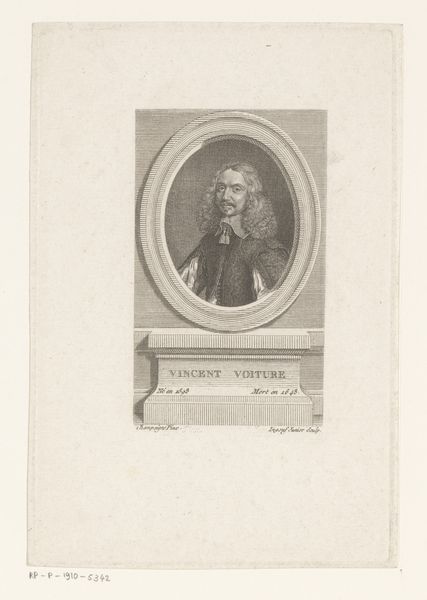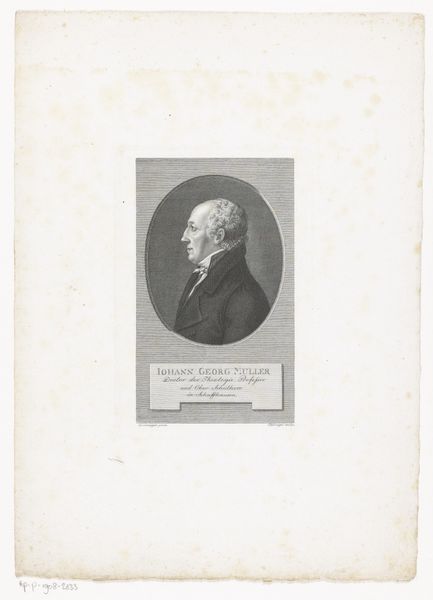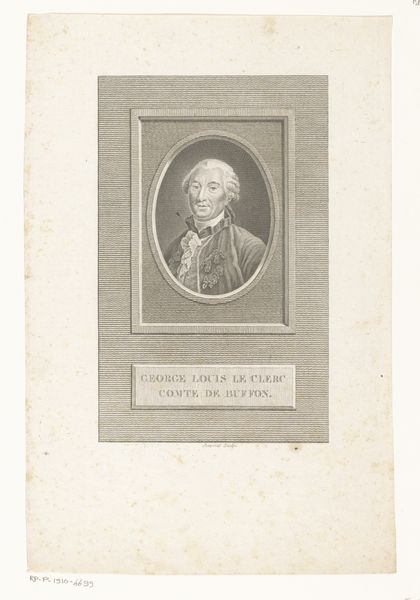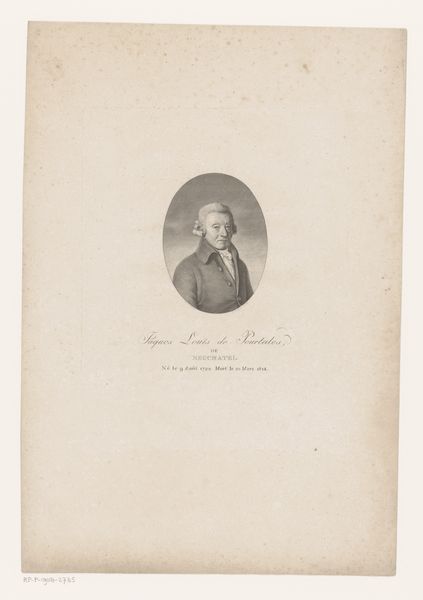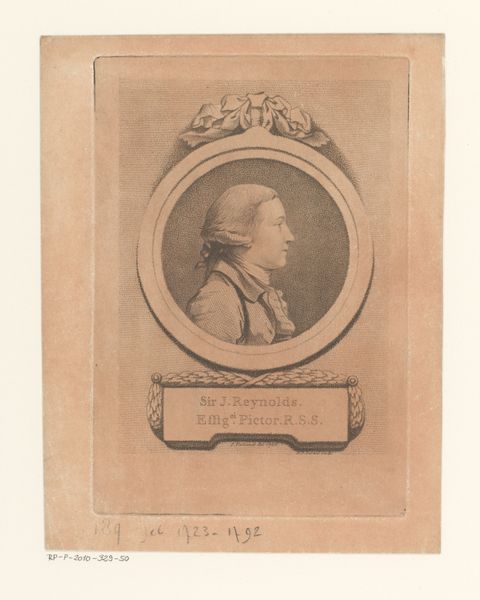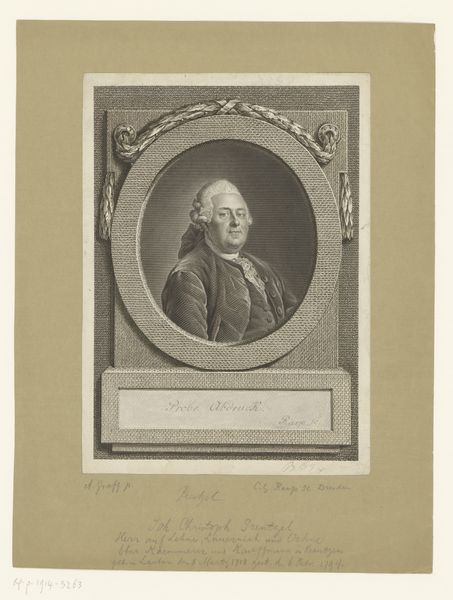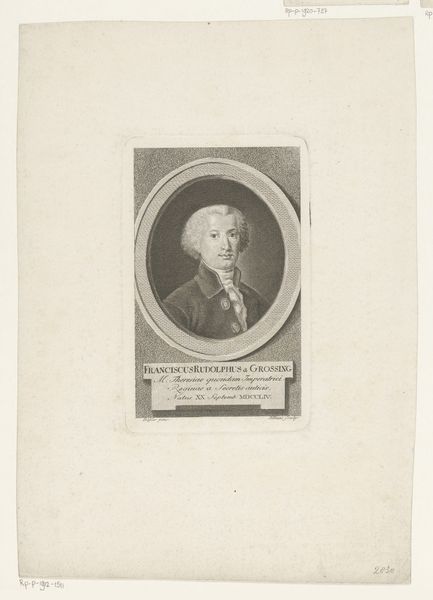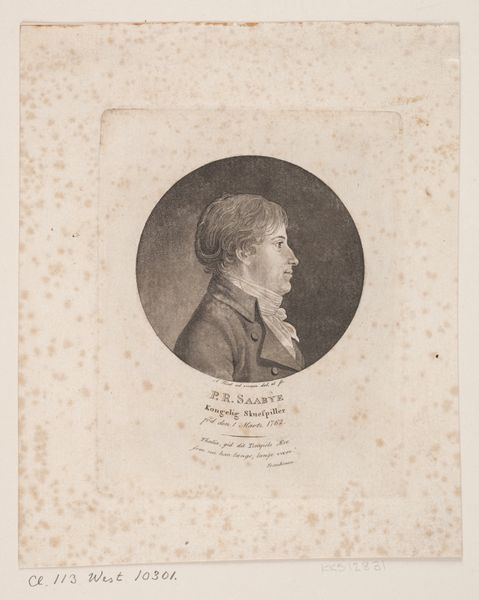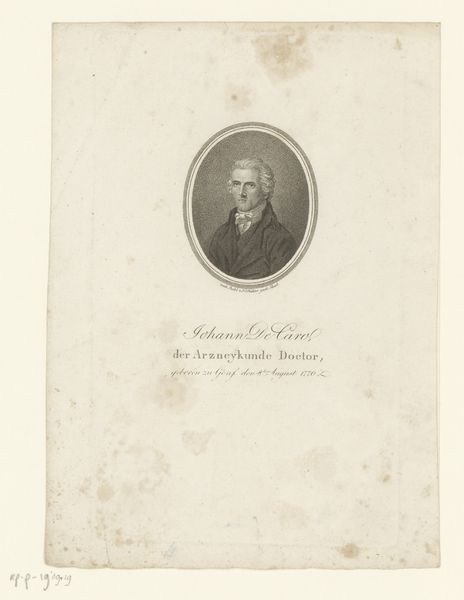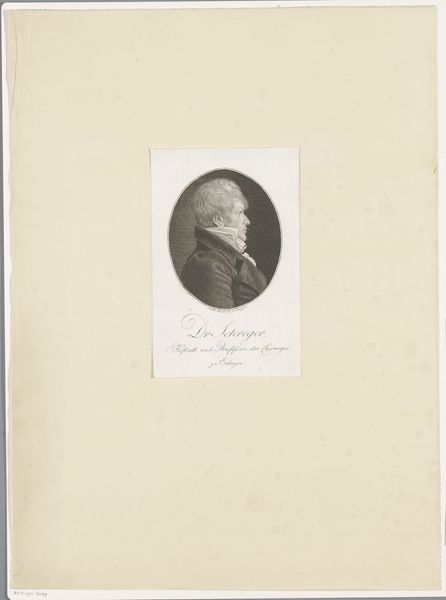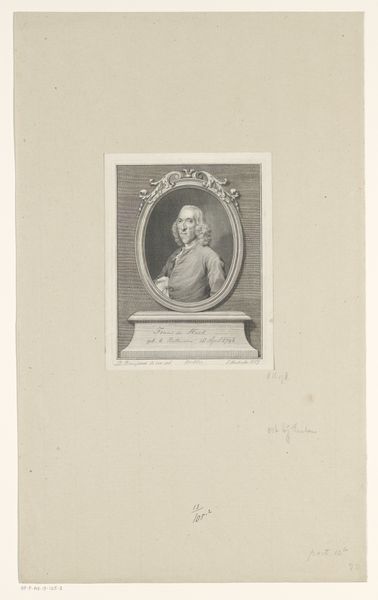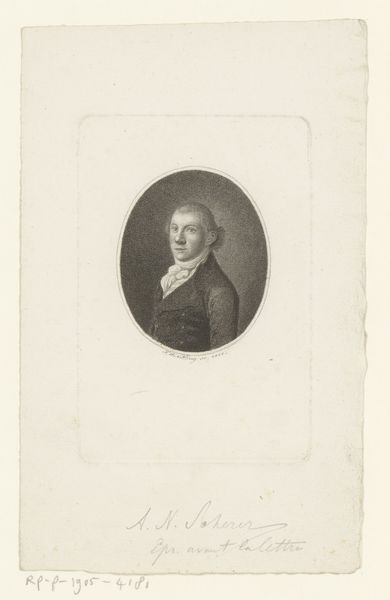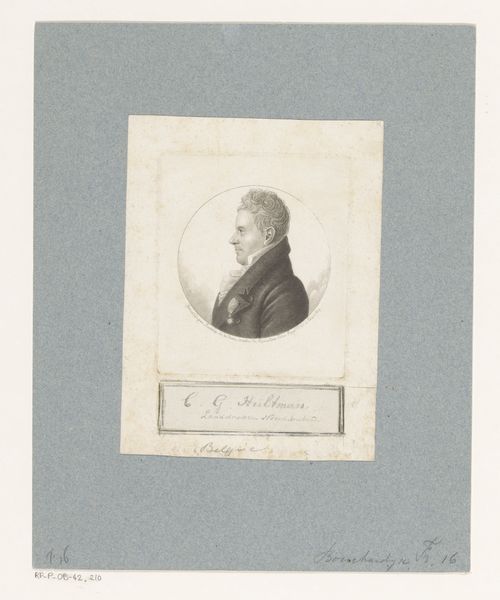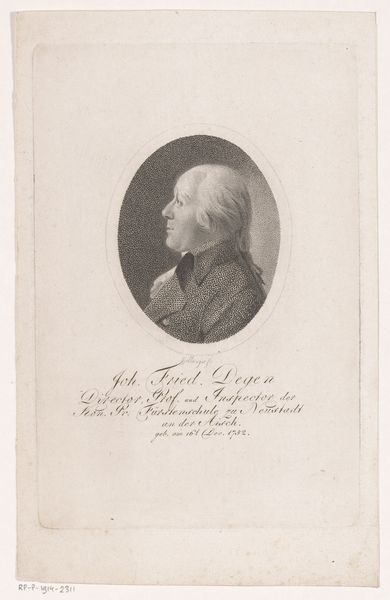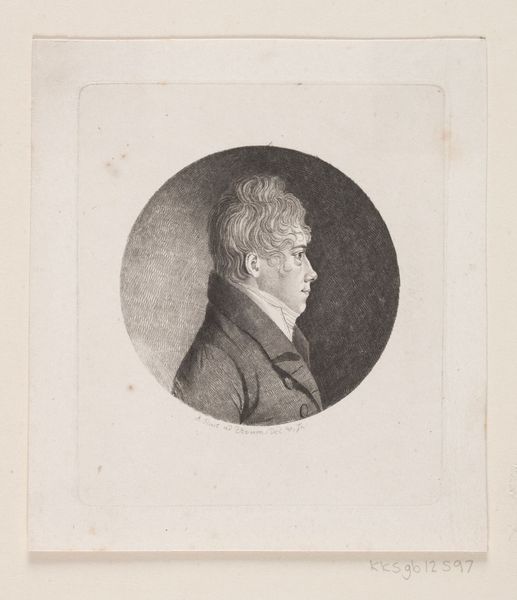
engraving
#
portrait
#
neoclacissism
#
figuration
#
line
#
academic-art
#
engraving
Dimensions: height 143 mm, width 83 mm
Copyright: Rijks Museum: Open Domain
Curator: Here we have Wilhelm Arndt's "Portret van Samuel Foote," an engraving crafted in 1796, currently housed in the Rijksmuseum. What impressions does this work conjure for you? Editor: The first thing that strikes me is the incredible detail in the line work, but also its sort of...restrained cheerfulness. It's like the Enlightenment tried to be lighthearted, but couldn’t quite shake off the academic starchiness. Curator: An interesting observation! Engravings like this, typical of neoclassicism, really emphasize line and form. Samuel Foote, it appears, was someone quite celebrated in his time; in the print’s text he is dubbed “the Aristophanes of his age”. To me, it suggests that visual representations such as portraits are ways we honor the continuation and endurance of celebrated men’s cultural impact, in visual format. Editor: The man himself has an expression like he knows something everyone else doesn't and he is definitely enjoying it, that “Aristophanes” title now makes me wonder exactly *what* sort of wit he dished out back in the day. I wonder, though, does the formal presentation—the brickwork, the oval frame, the inscription—feel a bit heavy-handed? Curator: Perhaps, but consider that Neoclassicism deliberately referenced classical forms to evoke notions of order, reason, and civic virtue. Placing Foote within this structured framework reinforces his stature and intellectual contributions as it sought to visually celebrate them. Even the rather severe brick motif adds an air of gravitas, reminding viewers of the enduring legacy of figures of accomplishment like Foote and what they represented to their society. Editor: I get it—it's about embedding the individual within a larger historical narrative, very considered. Yet the small, almost intimate scale also speaks volumes to me, suggesting a private devotion that runs deeper than the pomp of cultural movements alone might convey. There’s something strangely vulnerable amidst the rigor, too, do you agree? Curator: Indeed! It highlights how visual signifiers are more than rigid representations. They encapsulate the ongoing human desire to grasp at something immortal from our ephemeral, deeply felt experience, made possible by their tangible qualities, as if each line is meant to freeze an unforgettable, yet fleeting impression in cultural memory. Editor: Absolutely! I guess Arndt captured a little immortality with his own, very intricate hand and now the piece invites us into a bygone era where we get to play armchair psychologist interpreting that almost too self-assured gaze across the ages. It makes you think about permanence—doesn’t it?
Comments
No comments
Be the first to comment and join the conversation on the ultimate creative platform.
